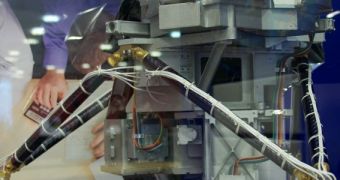When a simple valve on a simple pipe does not work, replacing it is a matter of minutes and minimal technical expertise. Not so when the valve you are trying to fix is responsible for the workings of a cooling system in one of the main scientific instruments on a $8.8-billion (€6.4-billion) space telescope.
The cryogenic cooler in question has to keep the Mid Infra-Red Instrument (MIRI) on the James Webb Space Telescope (JWST) cooled down to a temperature of around minus 269 degrees Celsius (-452ºF). This system has shown problems from the get-go, since this is already the second set of valves that had to be replaced. This May, NASA experts will decide if the new ones have to be changed as well.
“The cryo-cooler has been a problem for many years. We spent a year getting valves that actually can close,” said on Thursday, March 27, the Deputy Manager of the JWST program, Eric Smith, during a panel of the NASA Advisory Council. The current valves are built by Valve Tech Inc. in Phelps, New York. They need to control the flow of cold helium through 10 meters (34 feet) of refrigerant lines.
Initial tests have discovered that the valves leak and become contaminated, something that could doom the entire instrument. The JWST features just four main scientific instruments, so any such error would have devastating consequences for the largest, most complex telescope ever built. Valcor Engineering Corp. from Springfield, New Jersey, has already delivered another set of back-up valves.
“The decision in May would be ‘Do we keep the ones that are in there currently, or do we swap them out for [the] new Valcor valves’,” Smith told the panel, quoted by Space News.

 14 DAY TRIAL //
14 DAY TRIAL //